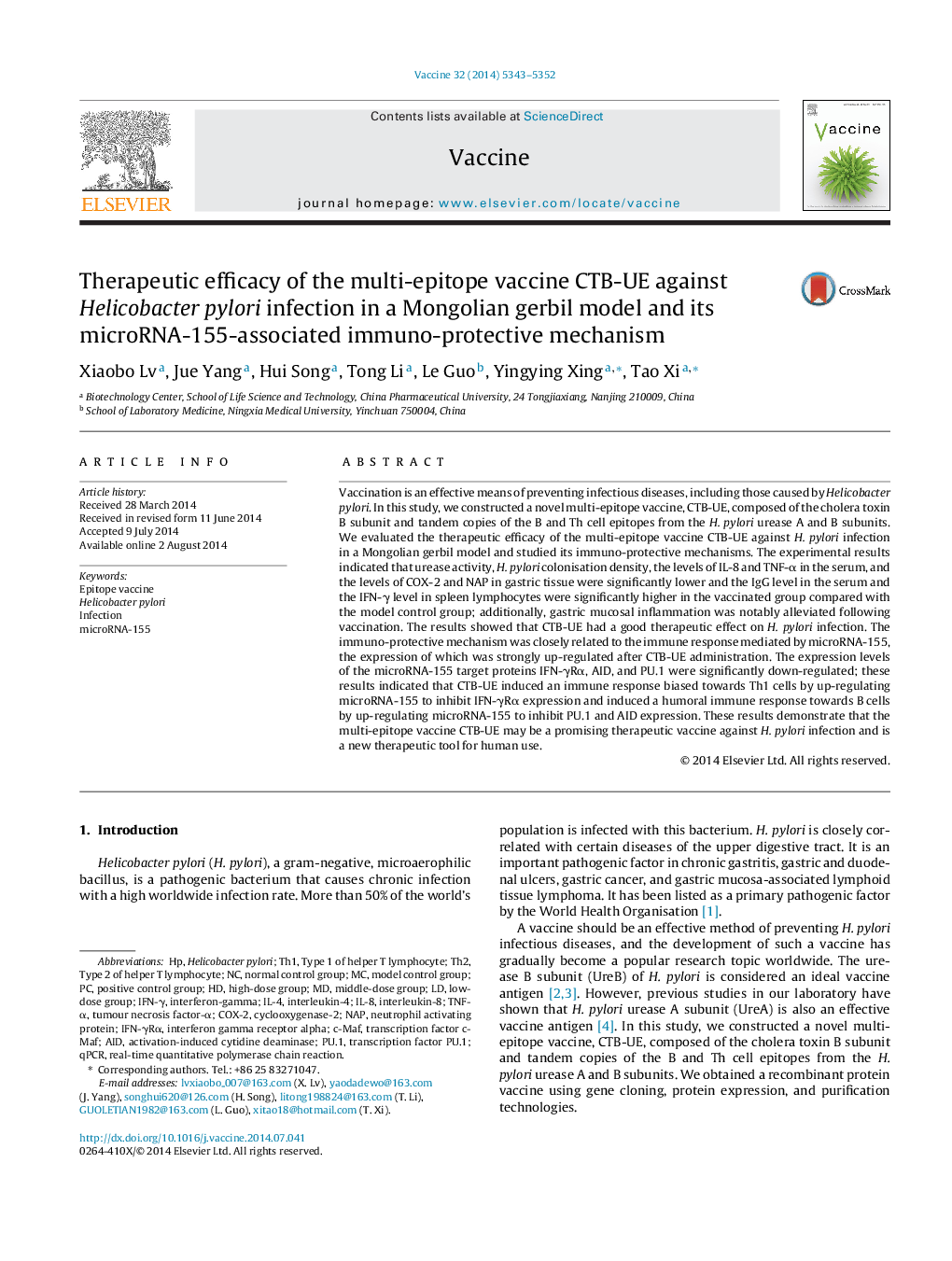| Article ID | Journal | Published Year | Pages | File Type |
|---|---|---|---|---|
| 10964662 | Vaccine | 2014 | 10 Pages |
Abstract
Vaccination is an effective means of preventing infectious diseases, including those caused by Helicobacter pylori. In this study, we constructed a novel multi-epitope vaccine, CTB-UE, composed of the cholera toxin B subunit and tandem copies of the B and Th cell epitopes from the H. pylori urease A and B subunits. We evaluated the therapeutic efficacy of the multi-epitope vaccine CTB-UE against H. pylori infection in a Mongolian gerbil model and studied its immuno-protective mechanisms. The experimental results indicated that urease activity, H. pylori colonisation density, the levels of IL-8 and TNF-α in the serum, and the levels of COX-2 and NAP in gastric tissue were significantly lower and the IgG level in the serum and the IFN-γ level in spleen lymphocytes were significantly higher in the vaccinated group compared with the model control group; additionally, gastric mucosal inflammation was notably alleviated following vaccination. The results showed that CTB-UE had a good therapeutic effect on H. pylori infection. The immuno-protective mechanism was closely related to the immune response mediated by microRNA-155, the expression of which was strongly up-regulated after CTB-UE administration. The expression levels of the microRNA-155 target proteins IFN-γRα, AID, and PU.1 were significantly down-regulated; these results indicated that CTB-UE induced an immune response biased towards Th1 cells by up-regulating microRNA-155 to inhibit IFN-γRα expression and induced a humoral immune response towards B cells by up-regulating microRNA-155 to inhibit PU.1 and AID expression. These results demonstrate that the multi-epitope vaccine CTB-UE may be a promising therapeutic vaccine against H. pylori infection and is a new therapeutic tool for human use.
Keywords
qPCRmodel control groupMicroRNA-155positive control groupPU.1Th2Th1Activation-induced cytidine deaminaseIL-8COX-2IFN-γIL-4NAPc-Mafinterferon-gammainterleukin-4Interleukin-8tumour necrosis factor-αCyclooxygenase-2InfectionTNF-αHelicobacter pyloriEpitope vaccinereal-time quantitative polymerase chain reactionNeutrophil activating proteinAIDnormal control group
Related Topics
Life Sciences
Immunology and Microbiology
Immunology
Authors
Xiaobo Lv, Jue Yang, Hui Song, Tong Li, Le Guo, Yingying Xing, Tao Xi,
